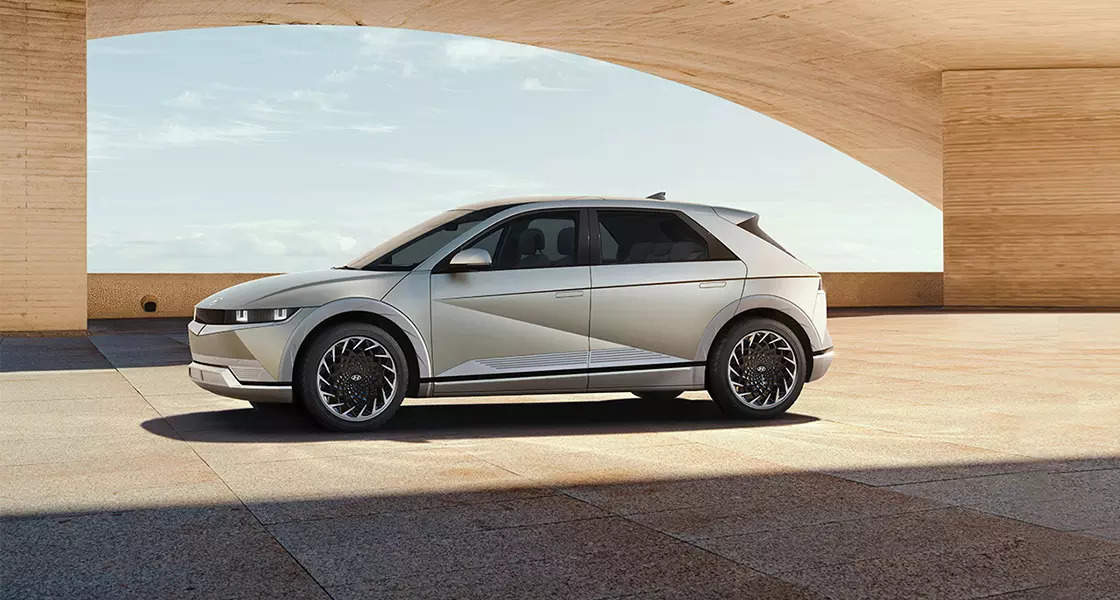
India’s second largest carmaker Hyundai Motor India Ltd (HMIL) is planning to launch 6 new battery electric vehicles in India by 2028 for which it has earmarked investment to the tune of INR 4,000 crore. The vehicles will cover a cross section of segments from mass to premium, hatchbacks and SUVs with the first model hitting the market next year.
Hyundai was one of the first of the foreign carmakers to launch an EV in India in 2019 when it brought the Kona SUV under the CKD route. It has remained relatively silent since then as homegrown auto major Tata Motors nudged ahead launching two products–Nexon and Tigor EVs, in the market while garnering a leadership position in the market. Hyundai said it hopes it will garner a higher market share in EVs than the 17 percent share it has in ICE vehicles.
“We should outperform compared to the existing general market in ICE vehicle performance because we can do better in case of EVs,” said S S Kim, managing director and CEO, HMIL. “We are one of the first learners in this new industry and we are confident of the EGMP platform. In many countries, our new vehicles and this new technology has been accepted and received by customers with great sales performance as well.”
“We are not focusing much on the volume but on the qualitative aspect of our business. When we achieve our qualititive target, market share and volume will be a given,” Kim added. “The first player (marketleader Maruti) right now is hesitant in terms of bringing electric vehicles but I don’t think they will continue to be so in future. They will come up with something in the near future.”
The company did not divulge details on the type of vehicles it would launch but indicated that there will be an equitable split between products that are built from scratch and those that are electric versions of existing ICE vehicles. Electric cars are yet to go below the INR 10 lakh price bracket, which still comprises of the bulk of sales in the country but Hyundai indicated it was not looking at doing so either and would command a premium over existing products in the market. It however added that the government should offer incentives for electric cars for personal mobility to make them more affordable.
“Mass market means customer wants affordable vehicle but at the same time with long range and fast charging as well. From OEM perspective to realize this is not easy. We want to be cost competitive and at the same time offer some high technology vehicle,” Kim said. “Whenever somebody drives an EV, it is a stressful situation….looking for charging station or spending 2-3 hours at each station. We will come up with some solution in each case to meet Indian customers needs but prices could be a bit higher because our cars will have so much technology.”
While many countries around the world have stipulated targets for electrification–some have even set a deadline for end of the road for fossil fuels, India is yet to specify any formal benchmark but achieving 30 percent of new car sales by 2030 has been cited as an aspiration. Hyundai said India must try and achieve that target but added that it should provide incentives like most other nations.
“They should achieve (30 percent). For Indian auto industry to be globally competitive in future as without domestic electrification, how we can approach the global market? How can we persuade the global customer to accept an India-made EV,” he said. “They want some reference, and some customer feedback from India as well. For us to be successful in our export business, we should have some domestic success story. The government should provide some subsidy for electric cars just like other countries do.”
The company’s plans while welcome, pales in comparison to Tata Motors is planning to have 10 EVs in the market by 2025. Kim said the company would not wait till 2028 to revise its plans incase electrification in the country gathers momentum before that.
“I think Tata is quite aggressive. They have full capacity to develop more than 10 products in this segment. Hyundai as a global OEM also has full capacity but currently based on our internal study we have come up with these 6 products to meet the demand in the market,” he said. “But if there is further development or new segments are created, of course, we will be there. Electric vehicle segment is not that much big right now. I believe our plan of having 6 vehicle is not 100 percent but reasonable for the Indian customer.”
















